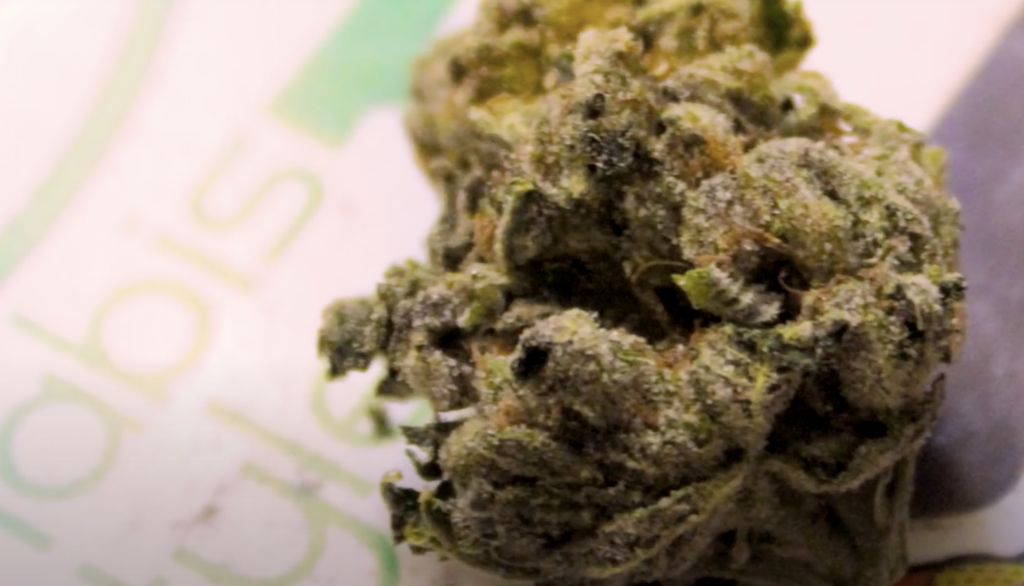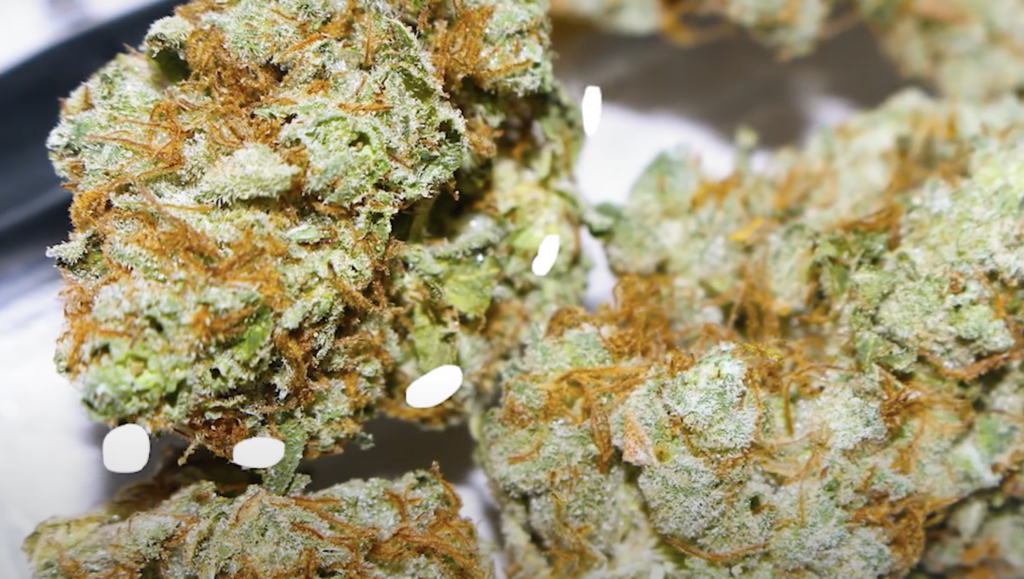What is Indica Infused Flower?

The naming of indica infused flower stems from the Enlightenment and is credited to French biologist JeanBaptiste Lamark. In his 1785 Encyclopédie méthodique, Lamark proposed a new species of cannabis based on the samples he had received from India, from his friend Pierre Sonnerat, the French naturalist. Lamark provided a botanical description of how indica differed from European sativa, in stem, leaf, and sexual organs. He also described the psychoactive effects resulting from consuming the indica plant, stating: “The principal effect of this plant consists of going to the head, disrupting the brain, where it produces a sort of drunkenness that makes one forget ones sic sorrows, and produces a strong gaiety.” Over two centuries later, the term indica remains relevant.
Indica versus Sativa in a Modern Context
Growers, retailers, and consumers currently identify two main types of cannabis plants: indica and sativa.
Indica plants are short and fat with thicker leaves, while sativas are tall and thin with skinnier leaves. Indica plants have shorter growth cycles and fare better in colder climates, whereas sativas have longer growth cycles and fare better in warmer climates.
Both types of cannabis plants usually smell different, which is likely due to different terpene profiles.
While there’s a wide range of indica and sativa strains, the range of hybrid strains is even larger, and, given the last half century of crossbreeding, some even say there really aren’t any pure indicas or sativas any more.
Hybrids can be a mix between two indica strains, two sativa strains, or an indica and sativa strain. What’s more, hybrids vary in strain proportionality, such as a hybrid that’s equal parts indica and sativa versus a hybrid that’s 80% indica and 20% sativa.
Indicas are known for producing a ‘body high’ and are generally more relaxing, whereas sativas are known for producing a ‘head high’ and are typically more energizing.
Nonetheless, the kind of ‘high’ a cannabis plant produces is ultimately determined by its specific set of compounds – cannabinoid and terpenes – and how a person’s body interacts with them. That’s to say, two people may get a different reaction from the exact same flower.
Regarding THC and CBD levels (the two most common cannabinoids), indicas and sativas can both have varying levels of each depending on the strain – so some indica strains may be higher in THC, or CBD, some sativa strains, and vice versa.
What is a marijuana strain?
If you’ve read a little about marijuana, or if you enter most dispensaries, you might see the words indica, sativa, and hybrid. Generally, most people divide marijuana into these three categories.
Indica, which originates from the Hindu Kush mountains of India, is believed to have a relaxing effect on the user. Sativa has a more energizing effect, while hybrid is a combination of the two.
Many industry experts, however, are reconsidering the indica, sativa and hybrid categories. According to Amos Elberg, head of data science at Confident Cannabis, these terms are more or less meaningless.
“We see samples of all cannabis products tested through our partner labs, and when we look at all the data, particularly of the chemical makeup of flower, we see no identifiable characteristics that are consistent with indica, sativa, or hybrid,” he explains.
“Essentially people are using these terms as catchalls for effect, but they’re not all consistent with those effects. Some indica makes some people wired, not couch-locked, for instance.”
In other words, people shouldn’t be alarmed if a reportedly energizing sativa strain has more of a mellowing effect, or if an indica strain makes them feel more bubbly and excitable.
Beyond indica, sativa, and hybrid, dispensaries might divide the types of cannabis they have into strains. Strains are essentially different breeds of cannabis, and they’re bred to have specific effects on the user.
But if the terms indica, sativa, and hybrid are essentially useless categorizations, are strain names also meaningless?
Not exactly, says Elberg.
“Not all seeds that are sold under the same name are genetically identical, or even necessarily related. Some producers may choose to create a strain name essentially as a branding exercise, or to identify their product with an existing name because they believe the product matches characteristics the market expects from product sold under that name,” Elberg explains.
How to Grow Indica Cannabis
- 1. Start with the Right Strain. There are so many seed strains on the market; it can be hard to pick the best one. Here’s the secret to growing great Indica bud: choose a strongly Indica dominant hybrid.You will have better results with a strong hybrid than a pure Indica variety. Hybrids are more resilient.
- 2. The Trick to Vegetating Marijuana. You can control the size of your plants by varying the length of time you allow them to remain in the vegetative stage. As soon as you change your lights to a 12/12 schedule, flowering is stimulated. The plants may stretch during flowering, but their maximum potential size is already set.
- 3. Grow Small, Fast and Full. For the highest yields of quality buds from Indica type marijuana, you want to grow fast and small. This means packing as many plants as possible into your grow space and limiting the time they spend vegging.
- 4. Train for Higher Yields. Unlike leggy Sativa plants, Indica strains generally don’t reach staggering heights. They grow short, squat and bushy, with thick leaves.This doesn’t mean you shouldn’t be training them. On the contrary, it is really easy to get Indica strains to do what you want.
- 5. Give them a Cool Breeze. Think about the environment that Indica strains evolved in. Even in the summer, nighttime temperatures in the mountains of the Hindu Kush drop significantly. Unlike their Sativa counterparts who like the consistency of tropical temperatures, Indica strains are used to fluctuations.For the best harvest, make sure you let the grow room temperature drop 10-15°F each night, especially during flowering.
- 6. Protect your Plants from Mold. Indica strains are famous for their rock hard, resinous buds. They come from a cool, dry region, where water is scarce. This means that they often lack resistance to mold and bud rot.
- 7. Proper Drying and Curing. Your job isn’t over after the harvest. For the best Indica buds, you need to cure them properly. We have a full article on harvesting drying and curing marijuana.Throughout most of the grow, an Indica is easier to handle than a Sativa. But that changes when you begin drying. Those dense buds are prone to mold and need to be handled carefully.

Ways to Take Indica Flower
Smoking it: the conventional way of taking indica flower is by smoking it, which can be done in a joint or blunt, a pipe or bong, or some other device that allows you to pack the flower and heat to produce the cannabis smoke.
Eating it: another common way to take indica flower is by eating it. Initially this was typically done in brownie form, but now people make all kinds of foods with indica flower, including pizza and ice cream.
Drinking it: cannabis juice is newer than the two other options, but it’s becoming increasingly trendy. To do this, you’ll need to finely grind your indica flower of choice and mix it with your juicing ingredients. Then bottoms up!
Who is Indica Best For?
Based on what we know now, the relaxing properties of indica flower are best suited for two kinds of people: folks with naturally mellow personalities (in which case it serves as a complement) and folks looking to mellow out (in which case it serves as a supplement). Considering that my buddy Rick is the former, it makes sense why he’d lean towards indica.

Leave a Reply
You must be logged in to post a comment.